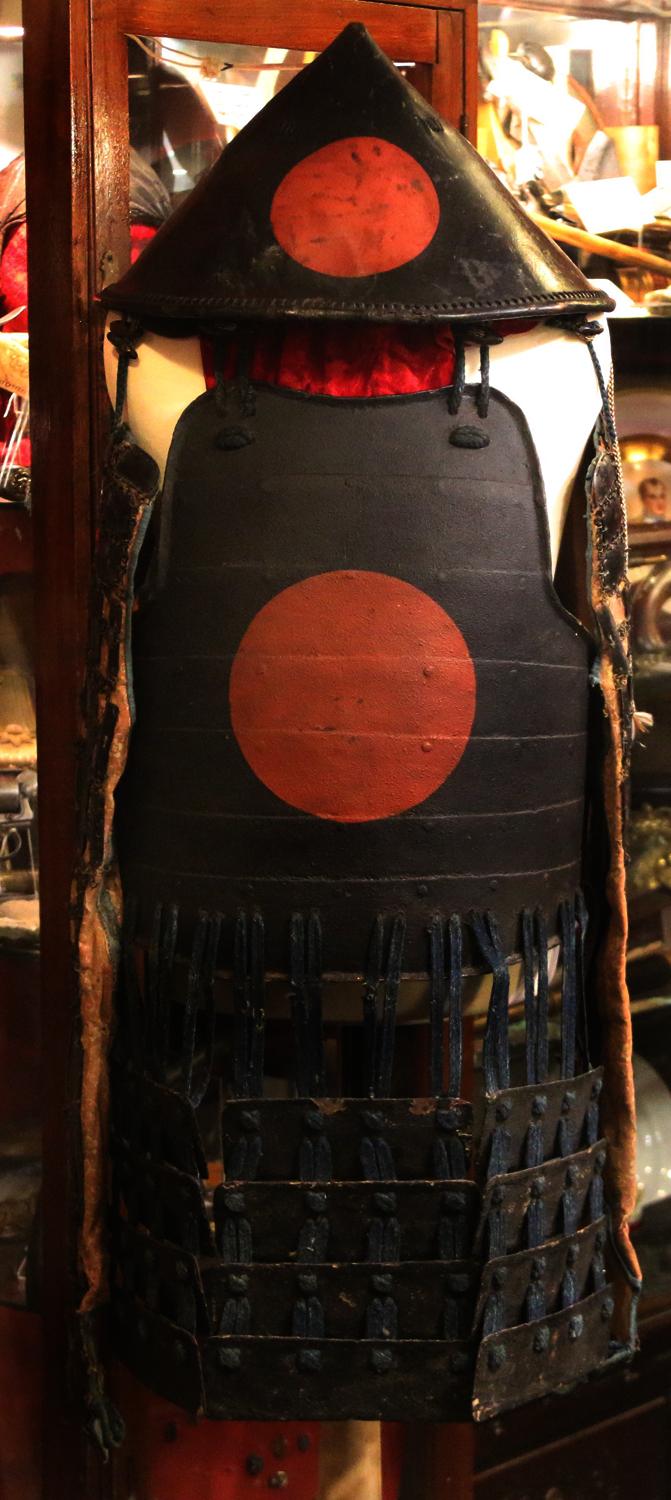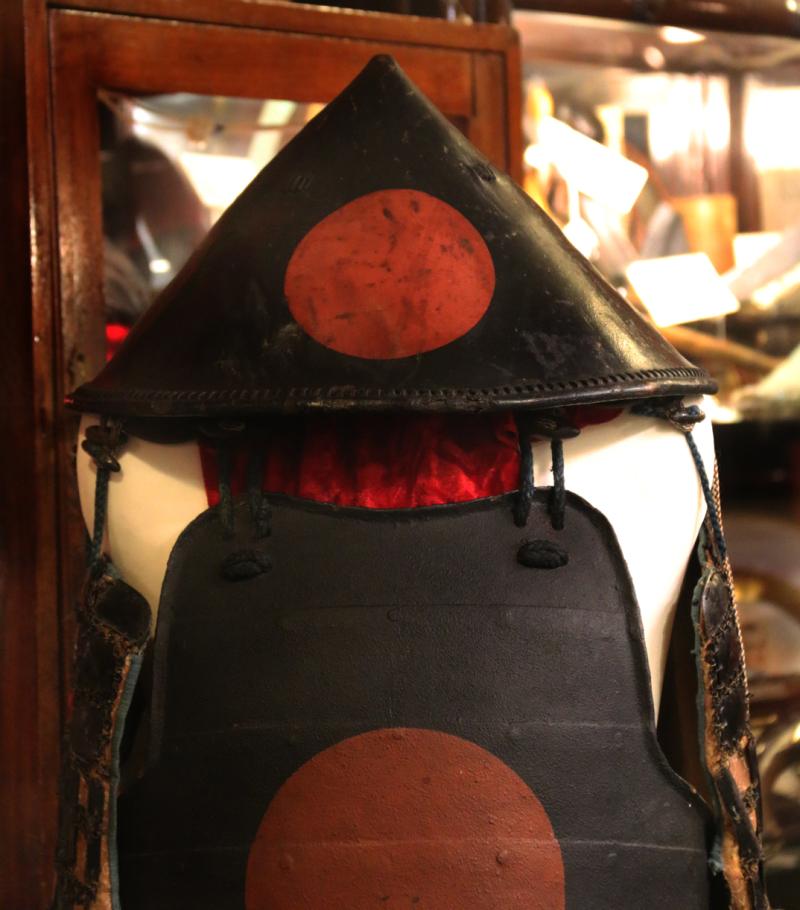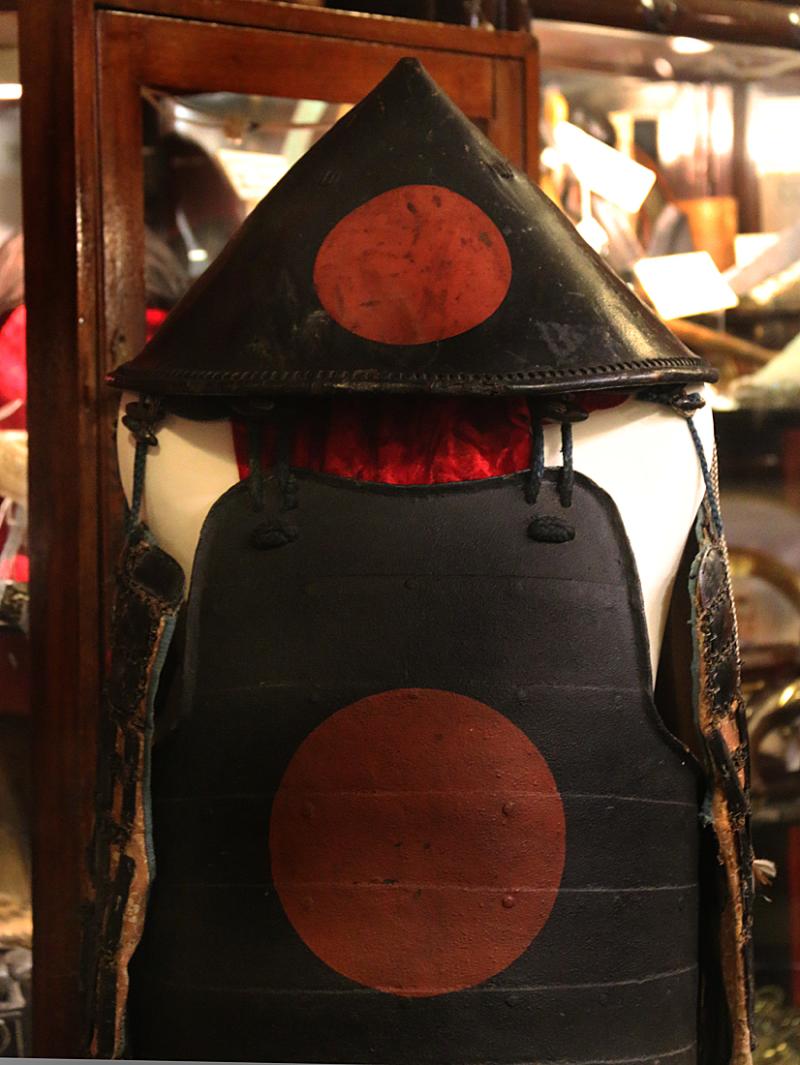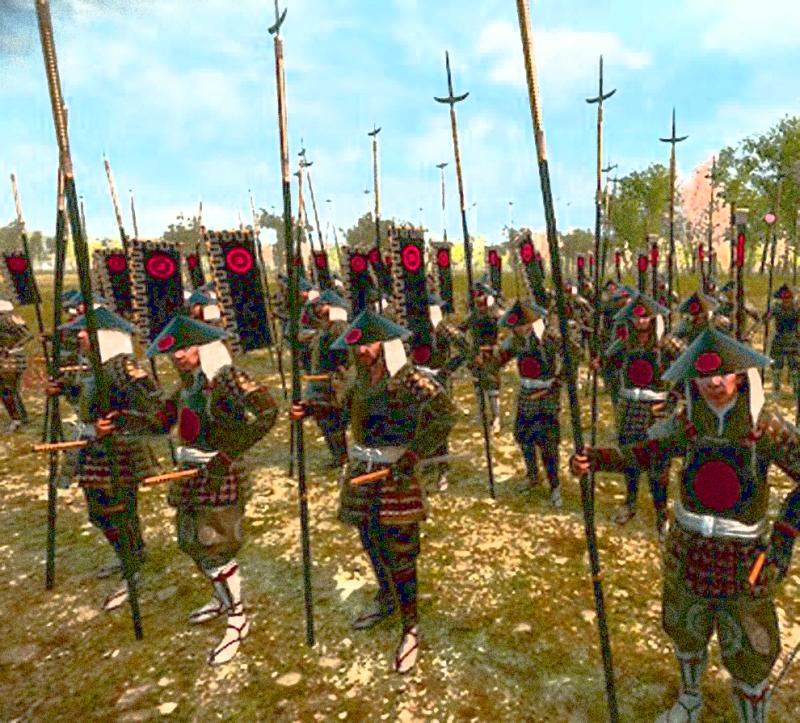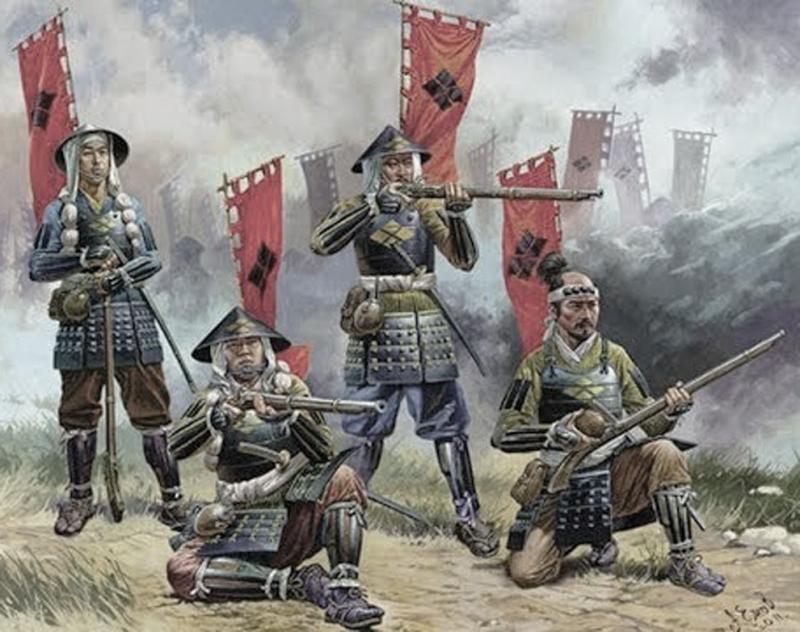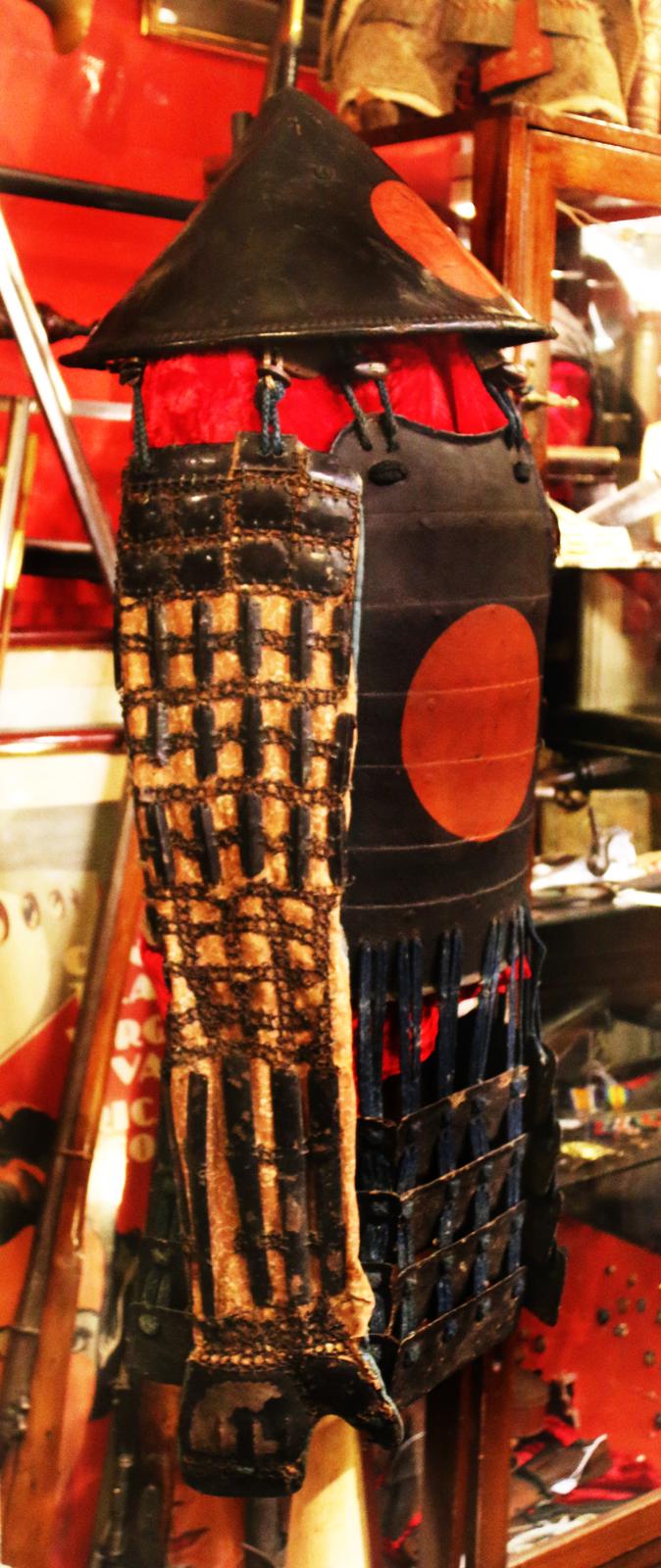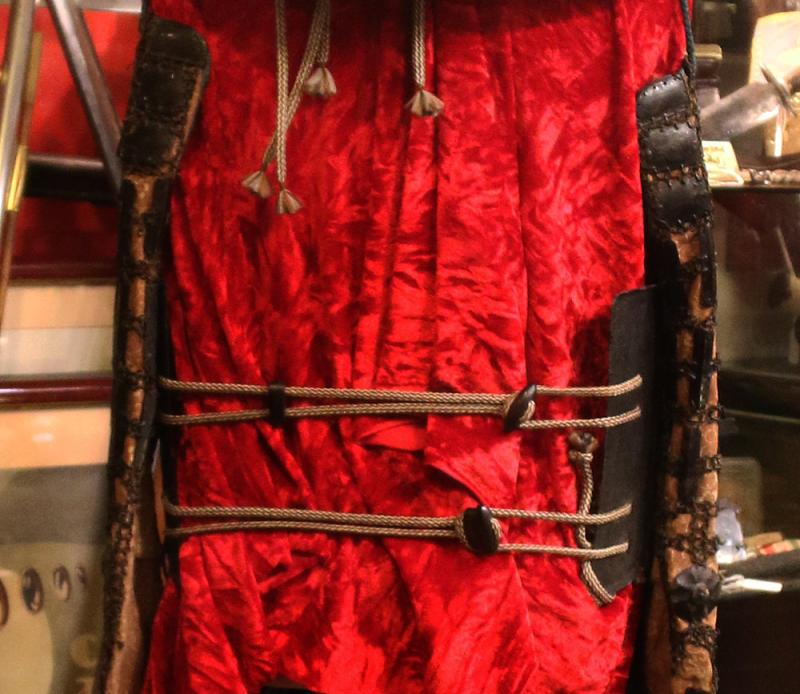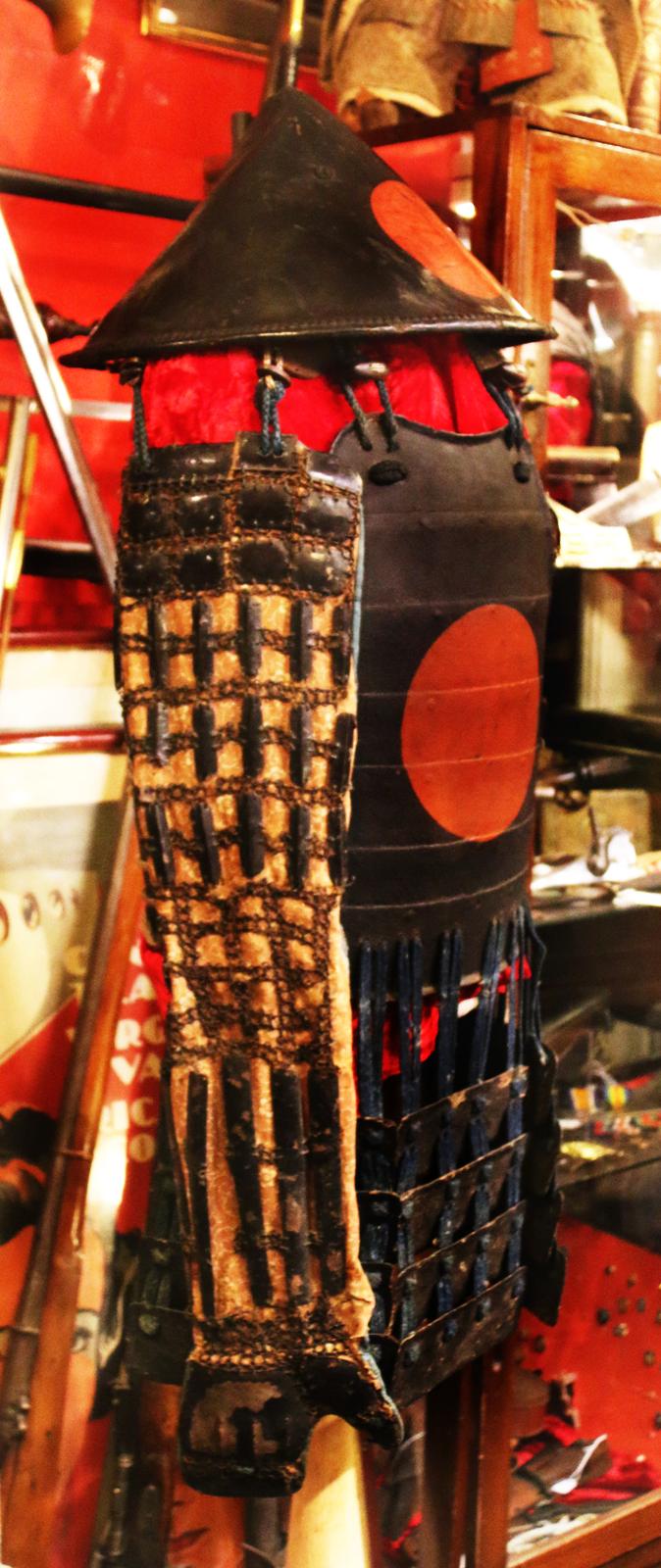A Very Attractive, and Most Rare Original Antique Edo Era Ashigaru {Foot Samurai} Armour and Jingasa Helmet. Commanded in Battle By The Ashigarugashira 足軽頭 . Around 300 Years Old.
17th to 18th century. Its Jingasa helmet is made in hardened leather, decorated with black lacquer, with a large red sun mon, a do cuirass of frontis plate with the same red sun mon, that secures at the back with cords. It has kusari kote arm sleeves and gauntlets, three panels of ito bound kusazuri, this is the plate skirt that protects the lower part of the body as well as the upper leg. It is laced together to the upper plates.
Ashigaru armour was light, flexible and simpler to make than usual samurai armour. It was worn by spear men foot soldiers, in battle or defensive service, and they may be armed with yari or nagananata {polearms}, yumi {bows with arrows} or tanegashima {muskets}, in most samurai armies. It was the most common form of armour in Rokugan.
In the Ōnin War, ashigaru gained a reputation as unruly troops when they looted and burned Miyako (modern-day Kyoto). In the following Sengoku period the aspect of the battle changed from single combat to massed formations. Therefore, ashigaru became the backbone of many feudal armies and some of them rose to greater prominence.
Those who were given control of ashigaru were called ashigarugashira (足軽頭). The most famous of them was Toyotomi Hideyoshi, who also raised many of his warrior followers to samurai status.
Ashigaru formed the backbone of samurai armies in the later periods. The real change for the ashigaru began in 1543 with the introduction of matchlock firearms by the Portuguese. Almost immediately local daimyōs started to equip their ashigaru with the new weapon, which required little training to use proficiently, as compared with the longbow, which took many years to learn. As battles became more complex and forces larger, ashigaru were rigorously trained so that they would hold their ranks in the face of enemy fire.
The advantage of the matchlock guns proved decisive to samurai warfare. This was demonstrated at the Battle of Nagashino in 1575, where carefully positioned ashigaru gunners of the Oda and Tokugawa clans thwarted the Takeda clan's repeated heavy cavalry charges against the Oda clan's defensive lines and broke the back of the Takeda war machine.
After the battle, the ashigaru's role in the armies was cemented as a very powerful complement to the samurai. The advantage was used in the two invasions of Korea in 1592 and 1597 against the Koreans and later the Ming-dynasty Chinese. Though the ratio of guns (matchlocks) to bows was 2:1 during the first invasion, the ratio became 4:1 in the second invasion since the guns proved highly effective
Some samurai would consider wearing ashigaru armour if a mission required them to travel light and fast, such as scouting, and Ronin were also noted for commonly using ashigaru armour, because of it's availability and lesser cost than elaborate armour
Every single item from The Lanes Armoury is accompanied by our unique Certificate of Authenticity. Part of our continued dedication to maintain the standards forged by us over the past 100 years of our family’s trading, as Britain’s oldest established, and favourite, armoury and gallery
Code: 25006
3895.00 GBP

